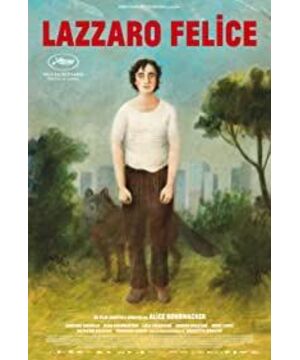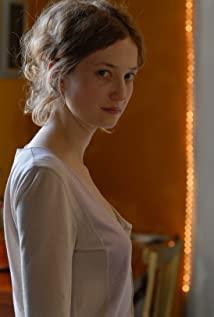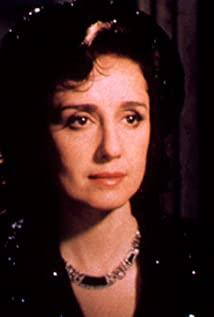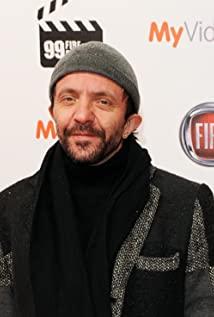I believe everyone is familiar with flashbacks. Even the most mediocre filmmakers know how to use flashbacks to adjust the rhythm of the narrative and release the emotions of the characters. When I watched "Happy Lazaro" today, I was watching this film with a distance of appreciation throughout the whole process, but it was the brief flashback scene that made me finally resolutely give this film a five-star praise (After all, religious gods and ideologies are too far away from me). Let's take a look at the use of flashback shots in the three films. We can find that this method can have a wider space for use.
1. "Insomnia" - Dormer returns to the hotel and falls into insomnia
Nolan's film is often overlooked, mainly because its story is no different from other Hollywood crime flicks. But if you put aside the story and look at its performance in terms of directing techniques and production, it can be considered as the most powerful and extreme film in Nolan's films.
The following group of shots was edited in half a minute. Nine shots were cut here. In fact, Nolan cut about twenty shots here, and several shots were less than 0.5 seconds long (so I did not cut off). This is a very bold approach. Generally speaking, such ultra-high-speed editing is only used in horror movies or action movies to bring an exciting viewing experience to the audience, but directors who do this in drama films, I only know Nolan.
I was amazed by the above shot, except for the other main character of the movie (because it wasn't there yet), almost all the elements of the movie are here, these things bother Domer, I don't know such Does the technique bother the audience? For me, this set of shots not only reinforces the inner suffering of the protagonist in the narrative, but also guides and stimulates the audience in the emotional aspect of the film. We all know that such a quick edit is quite visually impactful (see The Bourne), and this set of shots in the movie is a quadruple impact of vision, narrative, theme, and character emotion. The extreme editing method will make the audience feel uncomfortable, but this discomfort is exactly what the director wants to impose on the audience. The best way to deal with it as an audience is to fully enjoy the artistic pleasure it brings. "Insomnia" has a lot of great moments, including many scenes after Robin Williams. Perhaps the story of "Insomnia" is not the most avant-garde and avant-garde in Nolan's films, but it is no exaggeration to say that it is Nolan's best in terms of visual and narrative performance.
Therefore, the flashback editing in Nolan's films is often used to create negative emotions such as fear and regret for the characters, while the choice of fast editing creates a short-lived sense of horror, and it is easier to infect the audience through visual impact. For example, in "Memento", the protagonist recalls his dead wife many times. The audience and the protagonist do not feel a trace of comfort because of this, but are deeply depressed about the current situation, which is also in line with the consistent emotional theme in Nolan's works.
2. "Grave of Fireflies" - Setsuko's last look back
We all know that Takahata's movie will make people cry, and its story is really cruel. But, apart from the cruelty in the story, what else did Takahata do? The answer is flashback. Takahata Isao is a director who likes to use memories to tell stories. His "Fairy Tales of the Years" is completely told through this narrative form. Of course, flashbacks are a very common narrative technique, but Takahata Isao The control is masterful, because a simple narrative flashback is not enough, what matters is what the audience can gain from the flashback. Takahata Isao blurs the boundaries of time and space through editing, allowing us to talk and say goodbye to characters from the past. Let's take a look at the set of shots below.
The presence of this flashback is narratively meaningless, it's just to earn the audience's tears again at the end, yes, it does, but who says movies can't do that? This series of flashbacks without any of the characters being present is for the audience, it's for the audience to say goodbye to the character. We spent a lot of good time with Setsuko in the first hour, enjoying her innocence, enjoying the beauty she brought to the world, and now she has been mercilessly taken away by war and hunger, why can't we Finally remember her again, remember the joy she brought us? This is a point Takahata has always emphasized in his career, that is, the power that memories bring to us, especially through animation, Takahata believes that these memories can bring us more.
3. "Happy Lazzaro" - reunion in the cabin
In fact, from my personal viewing experience, I appreciate the fresh and smooth narrative in the first half of the film, and am surprised by the ups and downs of the later story and the profoundness of its expression. , an art film that can also make people reflect on the ills of modern society. However, what strikes me the most is never those academic, conceptual, organized content expressions, I still want those character emotions that resonate with me, or at least cause my personal emotions to fluctuate. s work. And this movie satisfies me in the following sequence of shots, when this sequence of shots appeared, my heart also melted, and my tears were pouring out.
Everyone is here, they seem to have just come out of the idyllic world of lies, everyone is smiling, they feel free, they have a new life, and they welcome it all with hope and no reservations .
This group of shots is not a flashback shot, it is a piece of Lazaro's inner expression. In his eyes, everyone has not changed, not because he himself has not changed, but because he didn't think too much, didn't think about it. What happened in the year, so that he ignored everyone's changes. For me in front of the screen, the change is huge. I watched them grow older, watched them change from simple farmers to the bottom population in the city, watched them change from laborers who depended on their own hands to eat into street rats who had to steal, rob, and cheat as a means of making a living, I also saw the smiles on their faces when they came here many years ago, and I could feel the hope in their hearts. And with Lazaro's perspective cut off, I'm back to reality and continue to endure this terrible life with the characters.
What made me special about this shot was that it was so defenseless, it came so fast. If the flashbacks in the above two works have their own purpose, then this one, I don't understand its purpose, because it is too short, too fast, and doesn't seem to fit in with the whole film. If I have to think about it, this last close-up of Lazaro can give some answers, just to show what he thinks of this group of people, of the world at this time? And this view is that these people have not changed, the world has not changed? I don't know, but I'm really caught up in the vortex of time and space in this shot, it makes me cry, it makes me miss, it makes me sad.
Flashbacks are used to show memories, the question is, what kind of memories can we show with it? When and how to cut into this flashback scene?
View more about Happy as Lazzaro reviews











